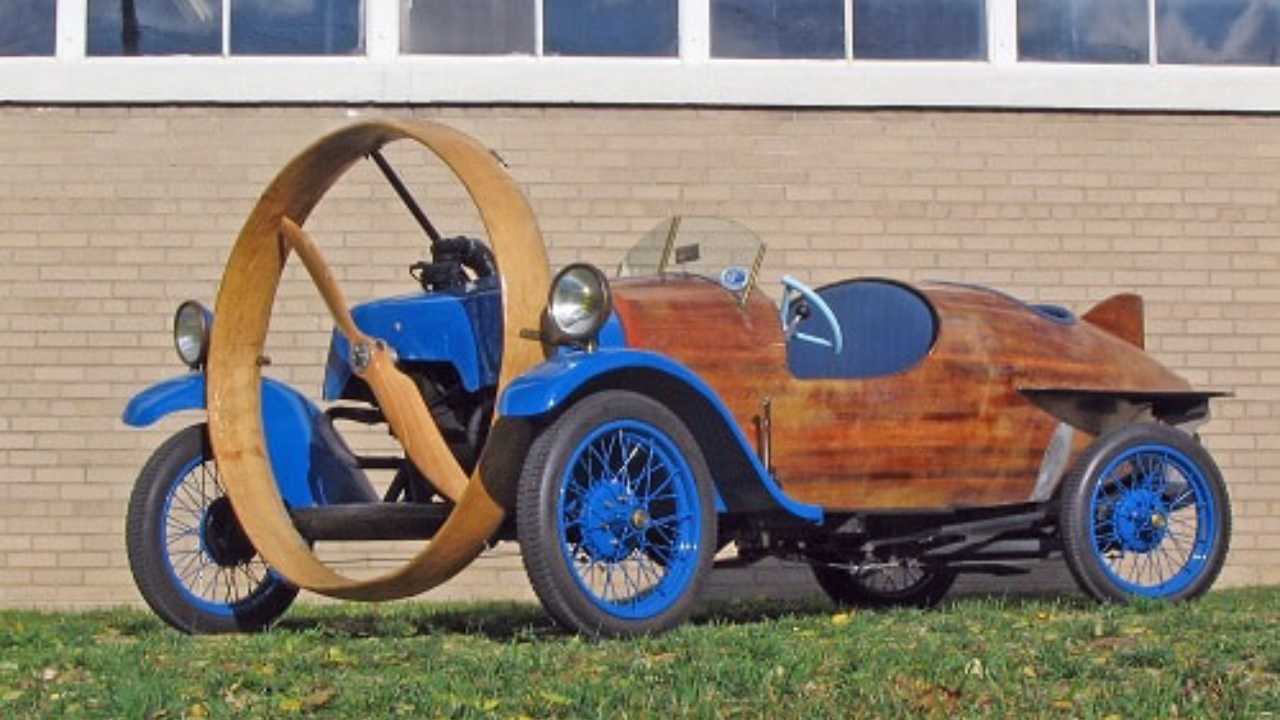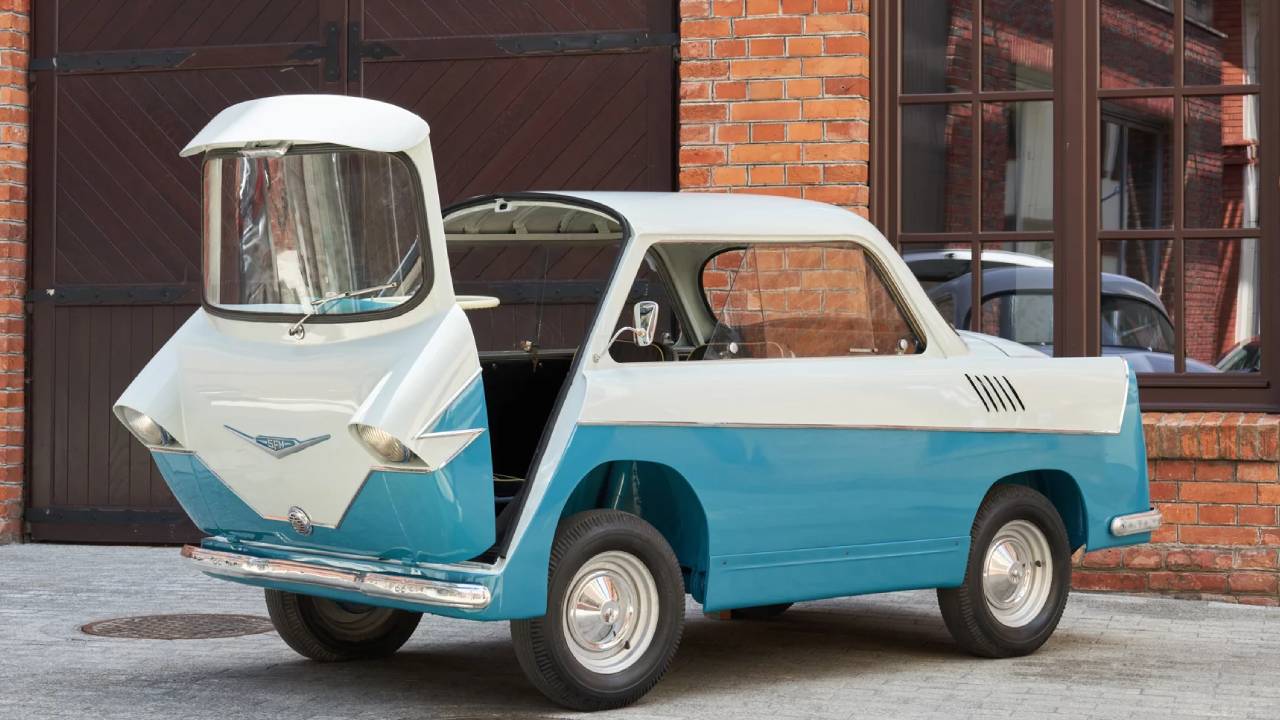Dreamers dream big. These propellor cars prove it.
These quirky cars may look strange, but they’re cool, except for the blades, which could quickly dissect unsuspecting birds, critters, or even people at a moment’s notice. It is no wonder they never made it mainstream.
But the creativity and engineering are things to appreciate!
1932 Helicron

The Helicron was found in a barn in 2000 and featured a propellor to help it move. It is believed to have been abandoned in the late 1930s and underwent a restoration to bring it back to life. The propellors would prove to be a real “meat eater” at a test ride in 2016. Bystanders would throw sausages towards it while it was in motion and watch the sausage get shredded. We definitely would want to avoid getting hit by one of these!
The restoration included repairing and replacing many damaged parts. Restorers would replace the original engine with a Citroën GS flat-four engine, which powered the propeller. The engine allowed the car to go up to 75 mph.
The car’s design was unlike any other of its time. Its chassis was flipped 180 degrees, the steering was at the rear wheels, and a lever was used instead of a throttle. The one-of-a-kind car weighed just 1,000 pounds and resides at Lane Motor Museum.
Ponder Prop Car

Safety? Who need that! We were not able to find a lot of information about this propellor car. All we have is what is described in this image from a 1934 issue of Modern Mechanix magazine.
Created by a mechanic, some called it an “auto-plane” – and for good reason. While it claims to go up to 85 mph, we definitely need proof to believe it. We only wish whomever is allowing this to rot in their barn, would share it with the world.
1921 Layat Helica

This 1921 Layet Helica is one of thirty built by Frenchman Marcel Leyat. Leyat originally built airplanes before creating the propellor-powered land vehicle. His early thoughts were that cars were too heavy, and he wanted to create something more lightweight and aerodynamic.
The Helica used a Harley-Davidson v-twin engine. The 18-horsepower, 1000cc engine helped the vehicle achieve a recorded top speed of 106mph, which was not typical for its time. The car had plenty of downsides, though. From the dangerous propeller to the inability to take turns well, it is no surprise it has never become more popular.
Schlörwagen

The Schlörwagen automobile was a vision brought to life by German engineer Karl Schlör. The oddly shaped car was designed to be a contender for setting new records on the Autobahn. Sadly, it never got close to living out that dream.
Schlör had a lot of knowledge of planes and wanted to bring some of that tech to the auto industry. The original concept was built in 1936 and showcased at the 1939 Berlin Auto Show, where the public response was not necessarily a good one. The project would be shelved due to the onset of World War II.
Sauterelle Propeller Car

The Sauterelle propellor car was created to help people cross the sandy desserts. It was created by Corporal Gustave Cros of the French Army in 1912. This car was unique in that is seemingly “jumped” to cross the san dunes.
It featured a six-wheel setup with a seven-cylinder engined. A later version would be created when the original did not work as expected. This one would have 12 wheels and a four-bladed propellor.
Stuttgart Ventomobile

The Stuttgart Ventomobile is one of the newer propellor operated vehicles. The propellor acts as a wind turbine and uses moving air to propel the car with the back wheels.
This vehicle was created by Stuttgart University aerospace engineering students in 2008. It would go on to win first place at the Aeolus Race in the Dutch town of Dan Helder.
Argentina Aerocar

The Aerocar was a prototype from Argentina that was created in 1953. There are claims it was able to travel up to 100 miles per hour. There was a time where there was speculation it would be considered for mass production in the United States, but that never happened.
These rumors were fueled the interest the Chrysler Corporation showed in the car. The car would ultimately meet its demise in 1955 when the project was scrapped and the car was converted to a traditional transmission.
Crazy Cars From The 1950s

Some amazing creations came from the 1950s. Sadly many never made it to mass production, or had limited runs.
View the 1950s cars you probably have not seen
French Inspired Cars From 1902-1919 Being Auctioned

There is no shortage of stunning automobiles from France, and know if your chance to own one.
View the French cars being auctioned

